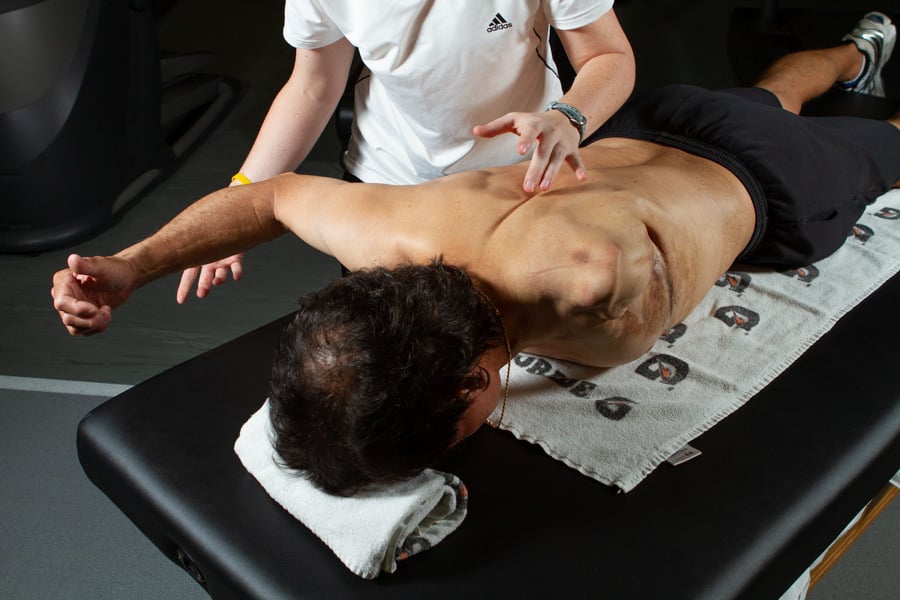The term for many of the treatments below is “physical agent modalities.” You may hear your therapist use that term when discussing potential ways to alleviate your pain. These methods include a wide variety of tools. Keep in mind that we are providing this list so that you can get an idea of how a therapist may help you — please first consult with your therapist and/or healthcare provider before trying any of these ideas. Your community therapist or an Arm Dynamics therapist can provide you with these treatments and instructions — in fact, we often work with community therapists to get you the help you need. One of the reasons you need to work with a healthcare professional is to ensure that there are no contraindications, that is, reasons not to use a particular approach given your individual situation.
Heat / Cold
Benefits of heat include increased circulation that improves the body’s ability to bring nutrients to the site of injury and remove toxins, all while increasing tissue flexibility, reducing muscle tightness, joint stiffness and resulting pain. Cryotherapy, or the application of ice or cold water, results in slowed nerve signal transmission, and decreased inflammation and swelling, also known as edema. The use of alternating hot and cold during a procedure called contrast baths is a helpful way to get the benefits of both heat and cold. Please note, though, that use of heat and cold can create changes in the size of your residual limb which can affect socket fit and should be discussed with your therapist and prosthetist, and although they may seem benign, application of heat and cold must be done with care to avoid possible negative consequences such as damage to skin or temporary nerve function impairment.
Massage
Massage is beneficial for physical ailments. It triggers a relaxation response which decreases heart rate, breathing rate and blood pressure which helps to decrease stress and anxiety. Relaxation of muscles can help alleviate painful nerve compression. It also increases circulation which helps remove toxins and improves tissue healing. It can lessen general body discomfort as well as work out trigger points or more focal areas of tension. Massage can also be applied to the scar location, to help with scar mobility, which can help later on to make sure your scar area stays as pain free as possible.
ACE™ Wraps, Compression Socks and Silicone Liners
The application of these tools to your residual limb along with limb elevation may help decrease swelling and pain by pushing excess fluid out of your limb. They also can assist with shaping your residual limb into the ideal size for prosthetic fitting.
Biofeedback
Biofeedback is a process wherein electrical sensors provide feedback that helps you to make subtle changes in your body that can result in decreased pain. It can help reduce stress and improve physical ailments by teaching you how to control your heart rate, breathing rate and muscle tension.
Desensitization
A desensitization program developed with your therapist can help with hypersensitivity to touch, temperatures or textures. Using a gradual approach, you should be able to increase your limb’s ability to tolerate uncomfortable sensory stimuli.
Neurostimulation
There are a variety of electrical modalities that are used for pain control, the most common of which is Transcutaneous Electrical Nerve Stimulation (TENS). Electrical impulses from TENS are thought to block pain signals to the spinal cord and brain. There are no known side effects aside from occasional skin irritation below the electrode pads. However, patients with pacemakers, irregular heartbeats or circulatory issues, or those that are pregnant should avoid neurostimulation.
Again, you should always seek professional help when starting with a new modality or method of pain control. The suggestions above are only some of the options available that can help those with an amputation reduce their pain. Other options include relaxation, social support, medications and more.
To discuss how to begin any of the above methods, please contact us. We would also love to hear from our readers about any successes they’ve had with the above treatments — or tell us about how they didn’t work for you, and what did! Please share in the comments.







%20President%20and%20Senior%20Clinical%20Director.jpg?width=600&height=600&name=John%20M.%20Miguelez%2c%20CP%2c%20FAAOP(D)%20President%20and%20Senior%20Clinical%20Director.jpg)










No Comments Yet
Let us know what you think